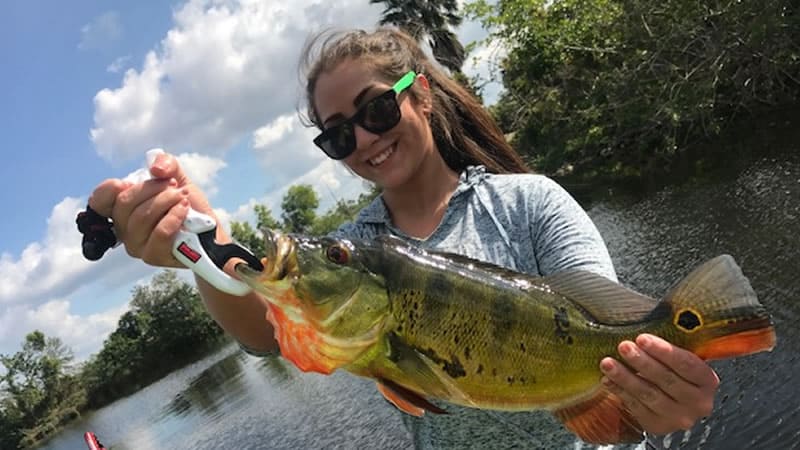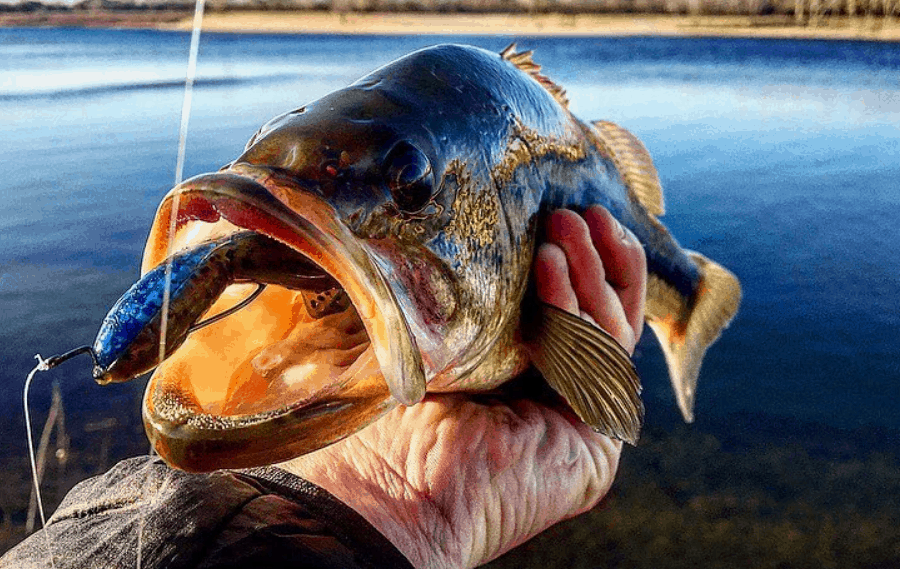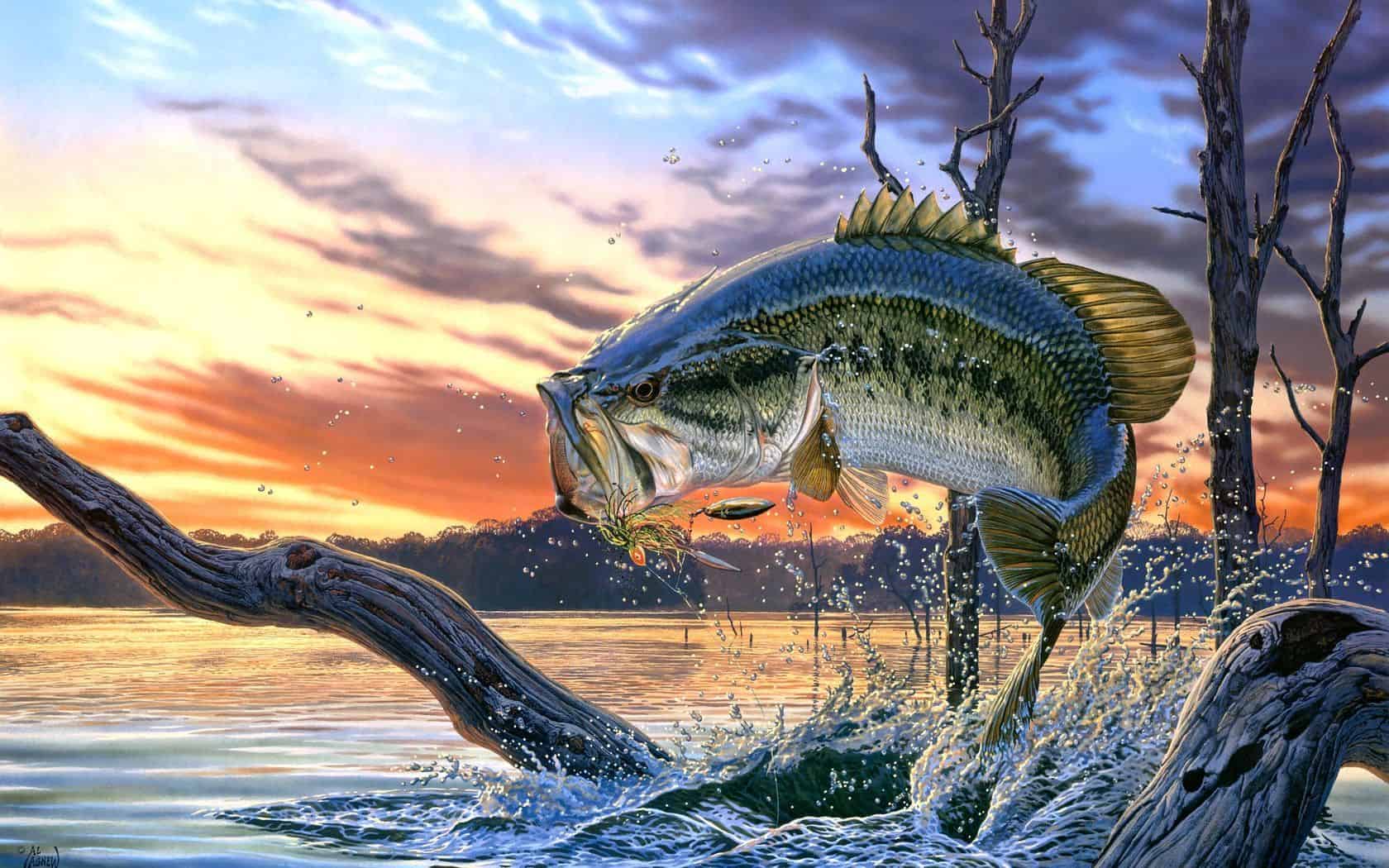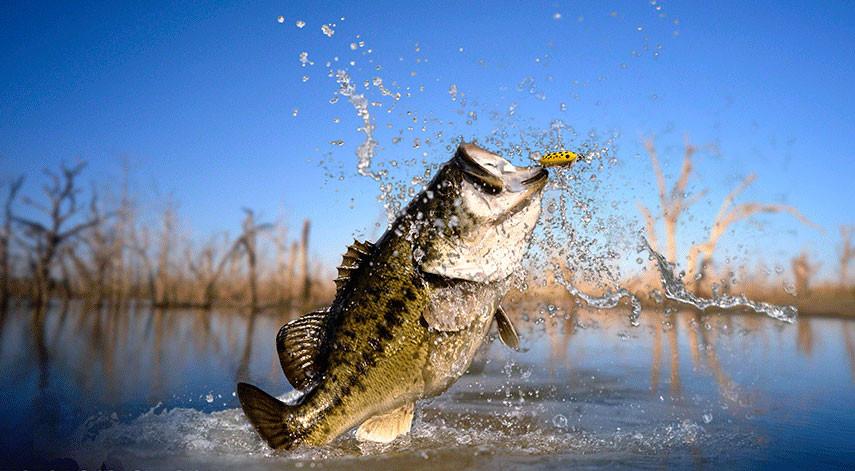Spawning is one of the most important pillars of bass fishing. Knowing when bass spawn can help you in keying in on the patterns of the bass in your area for months.
While pre-spawn bass fishing is the most fun of all, bass fishing during the spawn provides a unique and magnificent experience. You can pull bass from beds or use the aggression of the season to strike other predatory species.
Lastly, when it comes to post-spawn bass fishing, finding bites becomes quite difficult as compared to the other two phases.
As the climate of different states varies greatly from each other, depending on the location of the angler, the schedule of bass spawn also varies to a great extent.
In this article, we’ll be talking about when and at which water temperature you should expect the bass to spawn and how to know when they’re spawning.
Table Of Contents
What Water Temperature Do Bass Spawn?
Pre-spawn – 48 to 55 degrees
When the water temperature in bass habitats starts rising above the forty-five degree mark the bass start moving in the upwards direction from deep waters.
Therefore, early spring is known as the easiest and the best time to fish largemouth bass. You need to keep an eye on the climate near your fishing location.
Typically, largemouth bass are found in 2 to 12 feet of water. Concentrate on rock structures and look for bass in weed covers, and shallow creek arms. The best time to fish during pre-spawn is after a warm rain.
Spawn – 55 to 70 degrees

When the water temperature rises between 55 and 70 degrees, bass start seeking a protected, shallow area that is suitable for spawning. Large bodies of water such as lakes tend to warm up at a different pace in different portions of the water.
Therefore, all bass do not spawn at the same time. Typically the upper portions of reservoirs and the Northwest corner of lakes warm up first.
It is essential for the spawning area to have vast access to sunlight, so the best spots are shallow flats that are protected from rough water. These ideal spots are ordinarily located within ten feet of shore and their depth ranges from one to six feet.
The male bass occupy sites from which they can easily defend themselves. The spot needs to be near a sunken log, boulder, or bulrushes and deep water should be easily accessible.
Moreover, the male bass do not build their nest in an area where there is a visible spawning nest within a maximum of 30 feet. Sometimes bass end up having a nest that is closer to another bass’ nest, but that only happens when they are not visually in line with each other.
These nests usually look like white or black patches. Typically, the bigger the bass, the deeper the water will be, and the earlier they spawn.
Post spawn – 70 to 75 degrees
 After the spawn, the beds are empty. The bass take about two weeks to recuperate, and after that they head on back to the main river and deeper creek channels to feed themselves.
After the spawn, the beds are empty. The bass take about two weeks to recuperate, and after that they head on back to the main river and deeper creek channels to feed themselves.
It is quite tough to catch post-spawn bass. Once again, as different portions of a body of water reaches a certain temperature at a different time, the spawn time of bass vary according to their location.
Try to target bass in deep water that has a little cover. Look for points that are very long and can extend to a couple hundred feet. Some bass will still be in shallow water, but to strike multiple fish, opt for deep waters where they are more likely to be active and feeding.
Pull out your huge crankbaits and drag a Carolina rig to catch some quality fish. Both these baits are extremely easy to use.
How, Where, and When Do Bass Spawn?

You may first notice spawning beds in those sections of a lake that are most protected and the warmest. Bass typically spawn in areas that are safe from predators and wind, such as dock pilings, bushes, trees, and stumps.
Once the water temperature reaches above 55 degrees, they move to shallow waters and spawn. Although, bass in different portions of the lake spawn at a different time, the bass in deep waters are less aggressive and experience less angling pressure than the bass holding in shallow waters.
As the males are preparing the bed, the females tend to lurk around the spawning areas. Every time you see a male fish sitting on the bed, you should know that somewhere nearby, there must be a large female fish waiting around.
When the right time arrives, the female fish moves up and spawns, therefore, it stays in the shallow water only for a short time. After the spawn, the females move away from the spawning area to recover and the male protects the newly laid eggs.
How Do You Know When Bass Are Spawning?
There are multiple ways to know if the bass you caught was spawning or not. With a female bass, notice the area behind the gill plates, if it is swollen and red, you’ll know that it was caused because she rubbed the bed with that side of her body.
Next, notice her tail. If it has a tear in it that means she must have been fanning the bed with a lot of force. Now look at her belly and try to feel it. This way you’ll be able to determine if her stomach is empty or full of eggs.
Although there are several ways to determine a spawning female bass, there is no given method of determining whether a male bass is ripe or unripe.
Now that you know all about the bass spawn, we wish you happy fishing!

